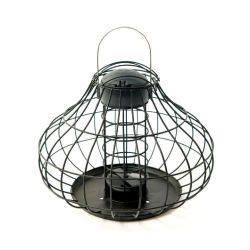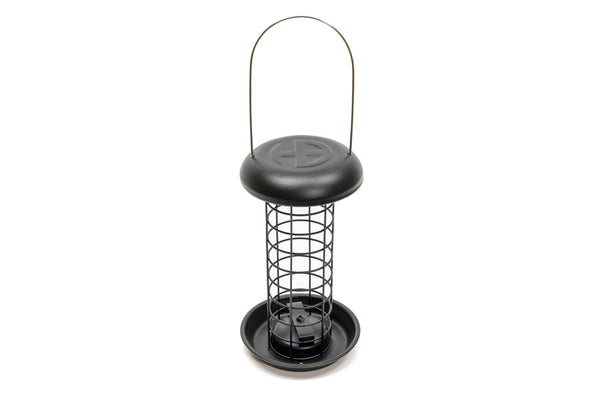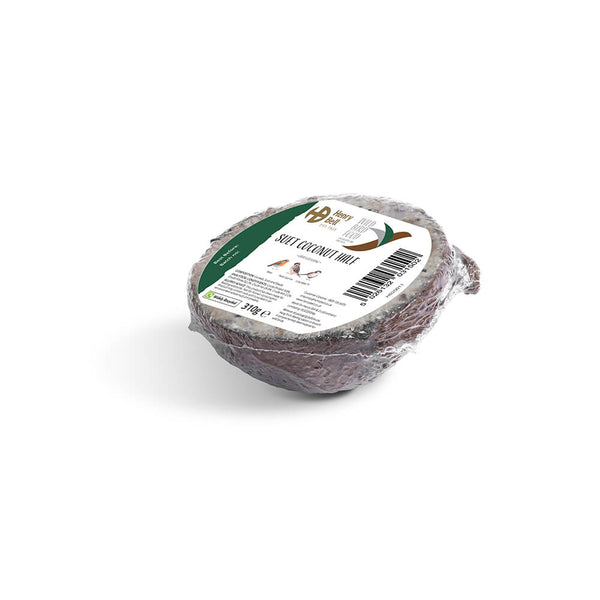How To Make Fat Balls for Birds
Making fat balls for birds can be a really simple activity that's just creative enough to spark a little joy in your kitchen. Try it out this year with your kids or grandkids - it's simple, and easy, and they're sure to enjoy seeing the birds, knowing that their fat balls attracted them.
Fat Ball

Fat balls are a very simple thing. They're essentially just a combination of a number of different elements that might go on a bird table, from bird seed to meal words, and even cooked oats. These elements are combined with fat, to bind them.
A homemade option
Homemade fat balls have seen a bit of a boost in recent years, since garden birds have become more popular over time, and homemade fat balls are easy to make.
That means that you can easily combine ingredients together in your kitchen to feel a little more in touch with nature.
Garden Birds
Garden birds are any birds that you might find in your garden. Within the UK, you will usually find that this is mostly robins, bluetits, and pigeons. You may get some slightly larger birds too, such as corvids like crows and ravens.

For smaller birds, fat balls are ideal. They contain an awful lot of fat and protein for the birds, precisely the kind of thing that the birds need to ensure that they've got enough calories to survive through the cold of the winter.
Bird Seed
Bird seeds includes a wide range of seeds, all designed to appeal to wild birds in the UK. This can include a range of things, from large options like pumpkin and sunflower seeds, as well as smaller options like poppy seeds.
Universal seeds
It's crucial to remember that many different birds will all be eating fat balls, so the bird seed that you might use as part of your dry ingredients should be good to offer to a range of them. Therefore, when making homemade fat balls, it's worth avoiding buying the seeds individually yourself. Instead, buy a general seed mix, and you should be good to go.

Ingredients you should not give to birds
There are plenty of things that you shouldn't give to birds, but the most common option that you should certainly avoid for fat balls is fruit pits and seeds.
The reason for this is that a number of different fruits contain very small amounts of cyanide in their seeds. While this doesn't really mean anything for big humans, it can be a lethal dose for a small bird.
When do birds eat fat balls?
Birds generally tend to enjoy eating fat balls during the winter months, as these are the months during which they need to eat as many calories as possible to stay warm and provide for their young. Therefore, you'll often see birds clustered around a fat ball feeder during the winter.
When not to offer fat balls

Make no mistake, though, you can feed birds fat balls at any time of year. The only time that we wouldn't recommend is the height of summer. During those months, the fat will spoil very quickly, becoming inedible and smelling atrocious.
What to put in fat balls
When considering fat ball ingredients, there are a few options!
For the dry portion of the mixture, you'll be best served by general-purpose seeds for birds that you might track down in a supermarket. You could supplement this with oats, as they contain a lot of nutrients that can be great for birds.
Consider adding mealworms, too, since insects make up some of the densest protein in bird feeders. That's why they're so commonly added to bird feeders - that protein will fill a bird's belly very easily.

The fat portion
For the wet, fat, portion of the mixture, you might have a bit of trouble. Suet is common, and you can buy suet cakes or a fat cake from a number of garden centers. These will help you make the fat balls in your own home, knowing you're using the right form of fat.
How to make fat balls for birds
When looking up how to make fat balls for birds, you can find a fat ball recipe online very easily. For the time being, though, we're going to run through the rough process so you'll know what to do at a later date. The first step when embarking upon homemade fat balls is to get your dry mixture combined. Therefore, in a large mixing bowl, bring together the seeds you're using, as well as any other additions.

In a large pan, melt down the fat that you're using. Bring the fat from fat cakes or suet, pretty much anything will work.
Pour the dry mix from the mixing bowl into the saucepan, and ensure that everything is well mixed together. Don't leave it on the heat as if to cook, simply stir everything in the pan into a cohesive mixture.
Finally, move the fat ball mixture into the molds you're using. You can use yoghurt pots or coconut shell, as the fat will form to the size of the container, and the container can then be hung in your garden.
Alternatively, you could use yoghurt pots and cut them off after the fat balls have cooled and become solid.
Once the balls have cooled to be solid, you can hang them out in your garden. If you used a yoghurt pot as a mold, you could thread through the pot itself, or you could make a small hole in the ball.
How to hang fat balls for birds

Hanging fat balls is easy. Simply make a small hole through the fat ball that you're working with, before threading that hole with twine. Tie the twine into a knot, and allow the ball to dangle off something in your garden.
If you've used coconut shells or other molds, you can pre-thread the molds before filling them with the fat. This may make it easier to properly hang the balls in your garden.
Is it cheaper to make your own fat balls for birds?

Homemade fat balls for birds are certainly cheaper than commercial fat balls. The reason for this, quite simply, is that suet is cheap, as are seeds.
How do you ensure that the fat ball sets?
To ensure the fat ball sets, you must use fat that has a fairly high melting point. This is why suet and lard are commonly used - they're solid at room temperature, and especially solid when outside in the winter.
Consider pinecone fat 'balls'

You can press the fat ball mixture into the small holes and whorls of a pine cone to be sure that they get reused in your garden. This may look a little more natural than a bird feeder and could entice birds into your garden.
What type of fat is best to use?
When considering fat balls for birds, you need to ensure you use a fat that will be solid when outside. This is because birds' feathers, as with other parts of the bird, can get stuck to the liquid fat, resulting in a messy, dangerous situation for the bird.

Suet fat balls and lard are most common since they are typically solid at room temperature. Bacon fat is also solid at room temperature, though the salty, smoky nature of the fat makes it a little less than ideal.
Can you use beef dripping for fat balls?

Whether making homemade fat balls for birds or offering a bird cake on your outside table, you need to use a fat that will be solid when it sits there. Beef dripping is solid at room temperature, so will work perfectly well if you use it in your fat balls.
Feeding birds in your garden is always a sweet, enjoyable activity. When making the fat balls yourself, it can become a little bit enjoyable in a pleasantly messy way, too. To that end, we hope you do make some fat balls for your garden soon!










